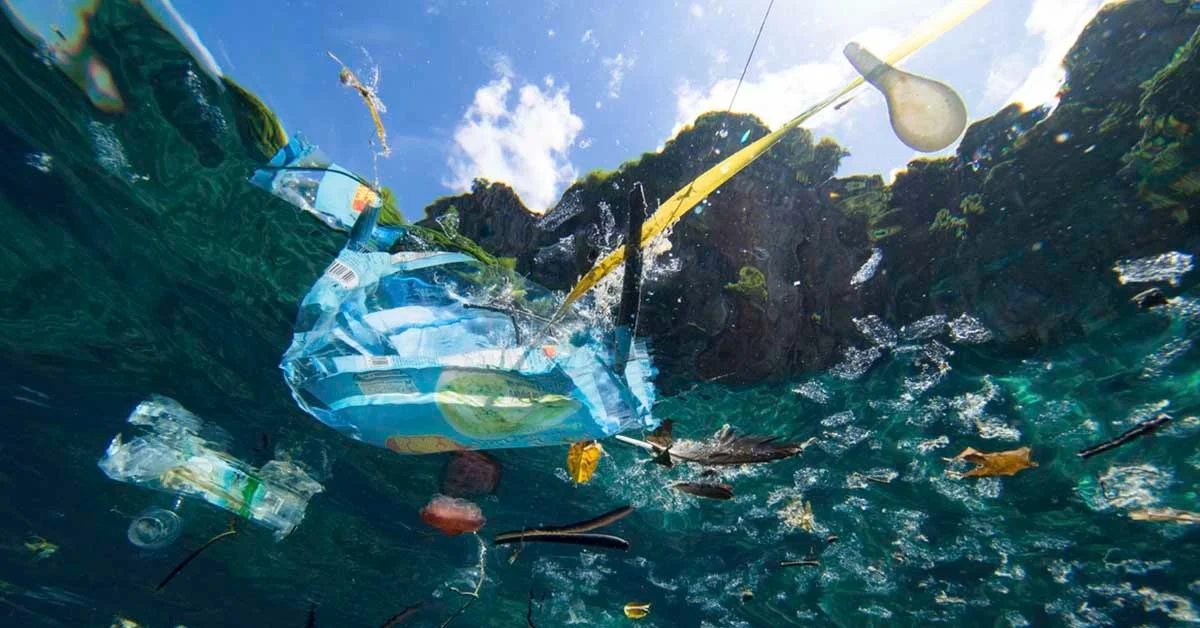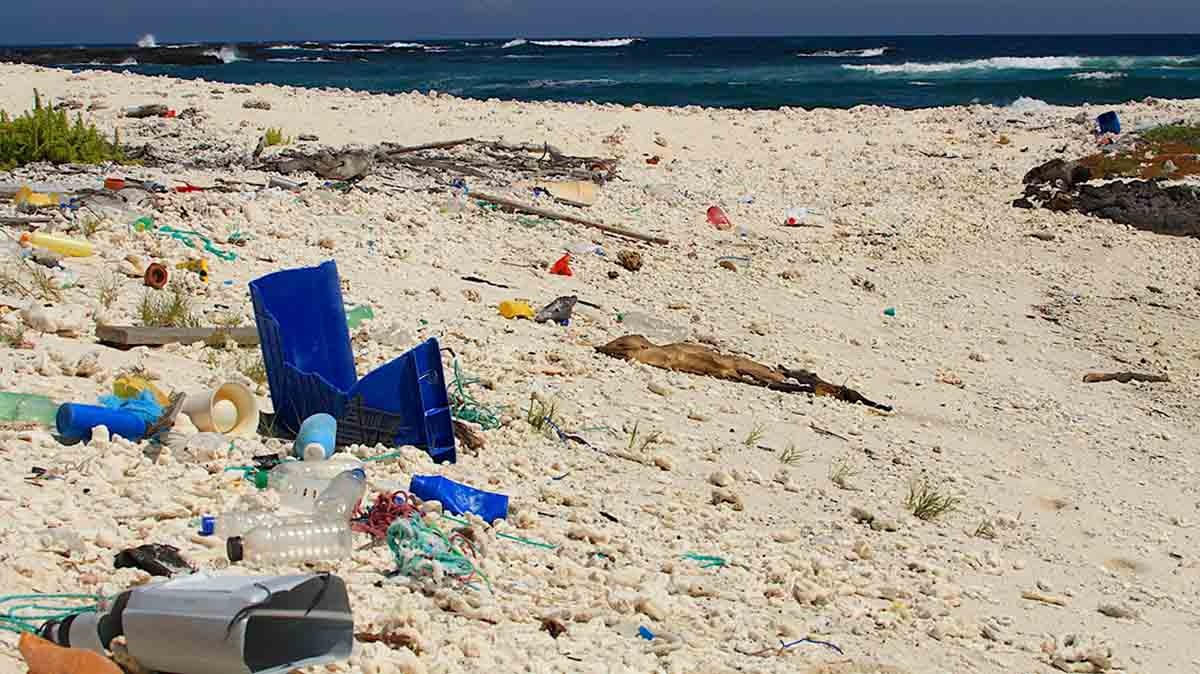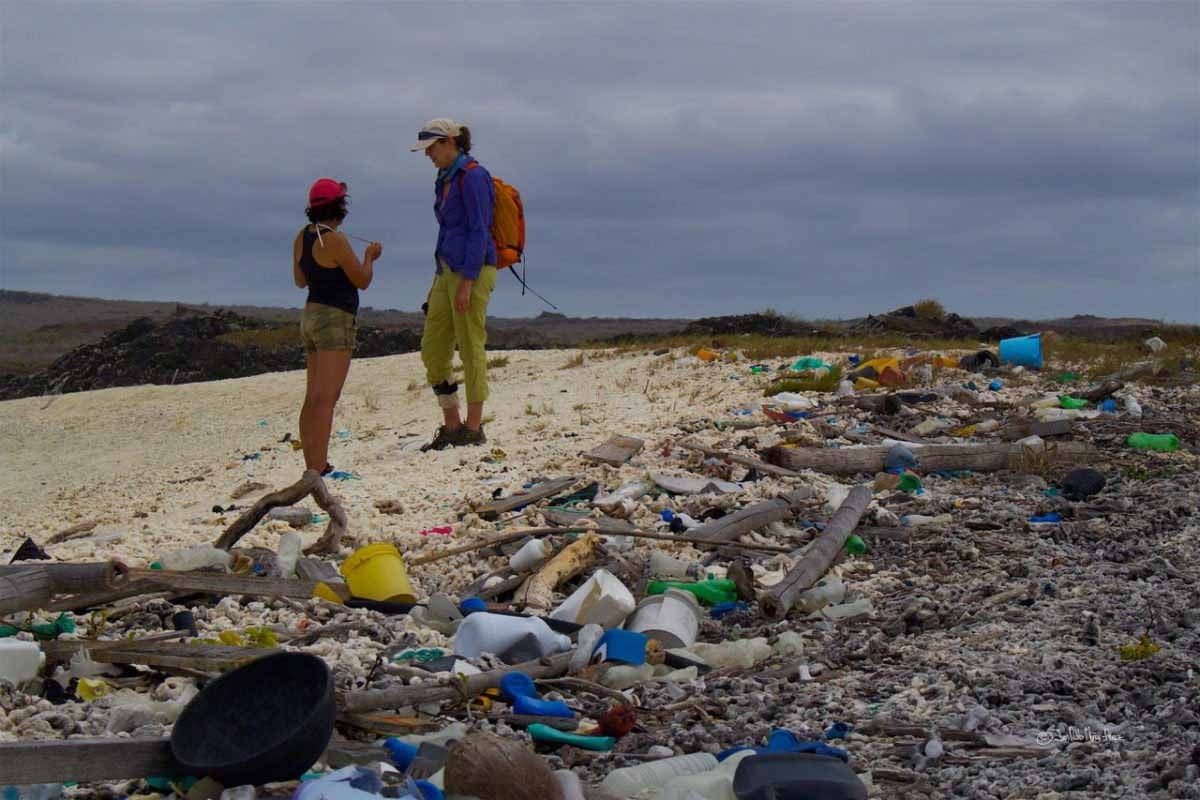
The environment could be irreversibly damaged by global plastic emissions | Travel Blog
According to researchers from Germany, Norway, and Sweden, current plastic emission rates may have global consequences that are difficult to reverse.
According to the study, plastic pollution is a worldwide problem and that actions to reduce plastic emissions to the environment are "rational policy responses". The study was published by the journal Science (2/7).
Plastic can now be found all over the globe, from deserts and mountains to deep oceans or Arctic snow. According to 2016 estimates, plastic emissions to the oceans, lakes and rivers of the world ranged between nine and 23 million metric tons per year. A similar amount was emitted onto the land each year. If business-as usual scenarios are applied, these estimates will almost double by 2025.
Matthew MacLeod (a professor at Stockholm University, and the lead author of this study) said that plastic is deeply embedded in society. It leaks into the environment everywhere even in countries with good waste management infrastructure. He believes that plastic pollution is on the rise despite scientists' and public awareness of it having increased in recent years.
Mine Tekman is a doctoral candidate at the Alfred Wegener Institute in Germany. She co-authored the study. Plastic pollution is more than an environmental problem. It's also a political and economic issue. She believes that current solutions, such as recycling or cleanup technologies, do not suffice and that the problem must also be addressed at its root.
"The world supports technological solutions to recycling and to eliminate plastic from the environment. Tekman stated that consumers believe that if we properly segregate our plastic trash, it will all magically be recycled."

Technology has limitations in recycling plastic. Countries with good infrastructures have exported their plastic waste to poorer countries. To reduce emissions, drastic measures must be taken. This includes limiting the production of virgin plastic to increase its value and prohibiting the export of plastic waste to countries with better recycling facilities.
When plastic is released in excess of what is removed by cleanup efforts and natural environmental processes, it accumulates in the environment. This process is called weathering.
"Weathering plastic occurs because of many processes, and we have made great strides in understanding these. Hans Peter Arp, a researcher at Norway's Geotechnical Institute and professor at The Norwegian University of Science and Technology, also co-authored the study.
Arp stated that "Degradation is slow and ineffective in stopping accumulation." Plastic is therefore an "imperviously reversible pollutant" due to its persistent emissions and environmental persistence.
Co-author Annika Jahnke is a researcher at the Helmholtz Centre for Environmental Research, and professor at RWTH Aachen University. She explained that remote environments are especially at risk. Plastic in the environment is constantly changing and moving, with increasing complexity and mobility. It is difficult to predict where it will accumulate and what it might cause.
Plastic pollution, in addition to the environmental damage it can cause by its own entanglement and toxic effects, could also be combined with other environmental stressors in remote locations like Antarctica or the Amazon rainforest to create wide-ranging or global effects. This new study offers a variety of scenarios for possible effects. These include an increase in climate change due to disruptions in the global carbon pump and biodiversity loss in oceans where plastic pollution acts in addition to overfishing; continued habitat loss due to changes in water temperature; nutrient supply and chemical exposure.
The threat of plastic emissions today could have a global-scale, but not easily reversible, impact in the future, according to the authors. This is why they believe that it should be a "compelling motivator" for targeted actions to reduce carbon emissions.

"Right now we are adding to the environmental pollution with poorly reversible plastic. We don't yet see any evidence of serious consequences. However, if weathering plastic causes a very bad effect, it is unlikely that we will be able reverse it," MacLeod warned. The environmental damage caused by persistent plastic pollution could be severe. It is sensible to take immediate action to reduce plastic pollution.
Plastics and the associated pollution continue to be a problem for environmental activists.
It has been proven that plastic pollution is entering ecologically fragile Galapagos Islands. This plastic waste can be found in seawater and within marine animals.
The annual production of single-use plastics is predicted to increase by 30% over the next five-years, posing further danger to the marine environment and increasing carbon emissions. Perhaps unsurprisingly, unscrupulous fossil fuel companies are responsible for the boom in single-use plastics. However, tourism companies and destinations are eliminating single use plastics from their supply chains.
There are new challenges in plastics. A recent Welsh study has shown that disposable face masks, which are now worn by millions every day due to the Covid-19 pandemic, can leach microplastics into water.
However, there is still pioneering research into tackling plastic pollution. For example, the University of Chemistry and Technology in Prague recently announced self-propelled microrobots that can swim, attach to plastics, and break them down.
Check Our Suggested Tours:
- Galapagos 5 days cruise on board the Ocean Spray North and Central islands
- 4-Day Galapagos Cruise: Discover Wildlife and Breathtaking Locations
- Itinerary C Endemic Cruise
- Northern & Eastern Wonders of Galápagos
- Exploring Galápagos + Machu Picchu and Peru's Land of the Inca
- Galapagos Southern Islands 6 days cruise Itinerary on board Ocean Spray
Check Our Galapagos Cruises:

